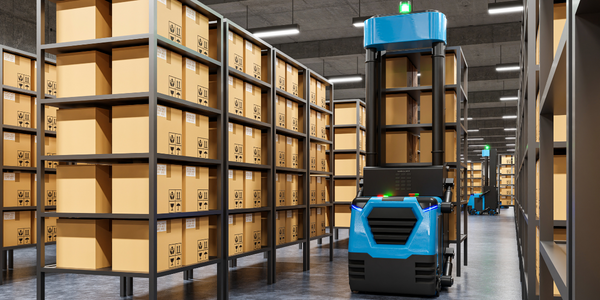Streamlining Marketing Efforts Across Franchises: A Case Study on 12RND and Brandfolder Content Automation

Technology Category
- Platform as a Service (PaaS) - Application Development Platforms
Applicable Functions
- Sales & Marketing
Use Cases
- Leasing Finance Automation
- Material Handling Automation
About The Customer
12RND, now known as UBX, is a boutique fitness facility based in Australia. The company operates a network of more than 70 franchises across the country, delivering workouts built around functional strength, conditioning, and sports-based cardio activities. The first franchise location opened in 2016, and the company has since experienced rapid growth. The company's central team oversees the marketing efforts of each franchise, ensuring brand consistency and effective promotion of the franchise. The company's growth plans necessitated a solution that would streamline the onboarding of new franchisees and strengthen the value proposition of the franchise.
The Challenge
12RND, now known as UBX, is a boutique fitness facility with a national footprint of franchises in Australia. As the company began to scale its model, it faced a significant challenge in maintaining brand consistency across its franchises. The brand style guide was loosely defined and open to interpretation, resulting in inconsistent marketing collateral that did not effectively promote the franchise. The rapid growth planned for the network necessitated a solution that would make the onboarding of franchisees as frictionless as possible and strengthen the value proposition. Prior to implementing a solution, the central team at 12RND had to manually check each franchisee's social media accounts daily, negotiate with the franchisee, redesign and approve new posts, and then re-upload them. This process was time-consuming and inefficient, hindering the company's growth and expansion efforts.
The Solution
12RND implemented Brandfolder Content Automation to address these challenges. This platform ensured instant brand consistency and scaled with the network's growth in terms of user growth and the templates within the platform. The company grew from using simple, core templates to providing a wide range of signage, digital, and print solutions through Brandfolder Content Automation for their franchisees. A franchisee could log into the platform and within 10 minutes, design a full marketing suite ready to be sent to the printer or shared on digital channels. This eliminated the need for approval and the cost for graphic designers. The intuitive interface of Brandfolder Content Automation enabled franchisees to easily produce their own collateral and marketing material, speeding up the process of building new campaigns.
Operational Impact
Quantitative Benefit

Case Study missing?
Start adding your own!
Register with your work email and create a new case study profile for your business.
Related Case Studies.

Case Study
Metal Fabrication
As each mast section needs a total of 222 reliable welds, manufacturing them is an extremely labor intensive process.Until recently, STROS had to use highly skilled welders to make these sections. Although it has been using robots for 25 years, these machines could not manage the complex arc welds in narrow spaces needed for these particular components. Consequently, in order to produce a satisfactory number of mast sections it had to employ three welders per shift at three separate workstations to make these pieces. Apart from the obvious outlay this required in terms of manpower and space, STROS found it increasingly difficult to recruit the highly qualified welders needed for this work. That's why in 2007 the company decided to hold a tender for the complete robotization of its manufacturing process for mast sections. Of the four firms who participated, only the ABB group could fulfill all its requirements.

Case Study
Digital Transformation in Insurance: A Case Study of Menora Mivtachim
Menora Mivtachim, one of Israel's largest pension fund and insurance carriers, was facing a significant challenge due to demographic trends in Israel. The growing rate of retirement planning and services was putting unprecedented pressure on the already strained insurance sector. The pension claims process was bottlenecked with complexities, bureaucracy, and errors. Menora Mivtachim's existing pension process was heavily manual and spreadsheet-based, requiring a team of 10 full-time employees to manage. The process involved gathering applicant information, conducting personal surveys, compiling bank information, and finalizing agreements. To leverage the growing opportunity in the retirement sector and position themselves as innovative insurtech leaders, Menora Mivtachim needed to digitalize their process, streamline the claims experience, and reduce quote times through automated processes.

Case Study
Automation in Mining: Unleashing Productivity and Efficiency with 5G
The mining industry, a significant contributor to global economic activity with revenues exceeding USD 500 billion, is facing a challenge of improving efficiency and profitability. The industry is gradually shifting its focus towards automation as the next area of opportunity. Boliden, one of the world's most successful mining companies, operates the Aitik mine, the largest open pit in Europe. The Aitik mine is expanding, and with the increase in production from 36 million metric tons of ore to 45 million metric tons, the amount of rock removed will also increase significantly. However, increasing the number of machines required for rock removal in a busy mine is not a straightforward task. Additionally, every blast creates toxic gases that need to dissipate before humans can enter the area and begin excavation. The challenge lies in improving efficiency, managing the increased production, and ensuring safety in the harsh mining environment.

Case Study
ANZ Bank's Digital Transformation with Nintex Advanced Workflow
ANZ Bank, one of the top 50 banks in the world and the fastest-growing bank in Indonesia, was facing a challenge with its rapidly increasing transaction volume. The bank's existing business processes and workflow were becoming overwhelmed. Like most banks in Indonesia, ANZ was manually handling document submission and verification. Customers filled out paper loan applications and supporting documents, then delivered them to bank branches by mail or courier. Branch officers traveled to the bank’s headquarters or used postal mail, email, and phone calls to submit loan documents for verification. Lost or inaccurate documents created more emails and phone calls. Additionally, ANZ had to adhere to strict verification and financial regulations, including the Foreign Accounts Compliance Act. This act requires that all banks outside the United States provide key information about U.S. clients, including citizenship validation, to the Internal Revenue Service–a complex yet crucial process.

Case Study
Conveyor Belt Monitoring
In a smart environment of management, control and industrial automation, one of the key elements to anticipate failures and increase productivity is to be able to monitor the status and use of conveyor belts of any kind of sector, whether it is for logistics or manufacturing.



